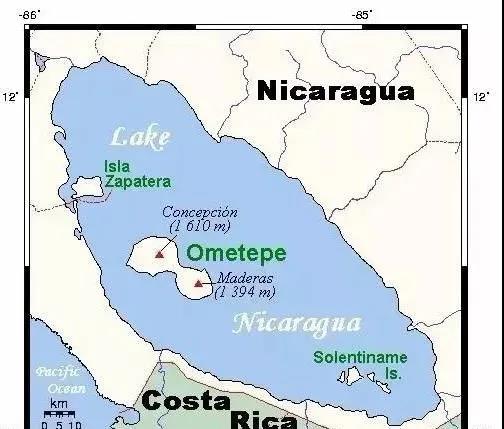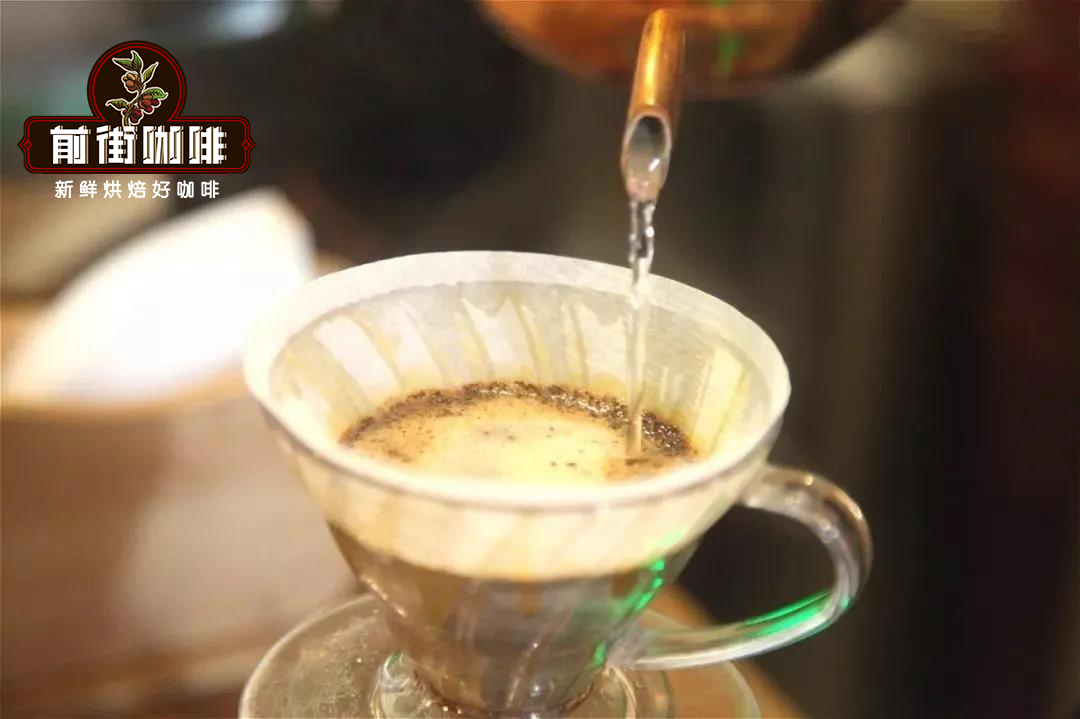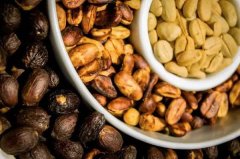Nicaragua Elephant Bean Coffee Maragogype Origin Story introduction to the characteristics of Nicaraguan Coffee

Professional coffee knowledge exchange more coffee bean information please follow the coffee workshop (Wechat official account cafe_style)
Among the large kinds of coffee, it is divided into Arabica (small seed), Robusta (medium seed) and Liberica (large seed). Arabica is widely cultivated commercially for its excellent flavor, and there is a "traitor" in it. Unlike other Arabica coffee, it is huge and is known as a giant elephant bean. In this article, Qianjie Coffee will introduce what is amazing about elephant beans in addition to their size.
Where is the elephant bean sacred?
Elephant bean, the scientific name is Maragogype. As a result of the first discovery in 1870 in the Marago Rippi producing area in the Brazilian state of Bahia, Marrago Rippi was also used as this abnormal coffee bean species. Through the comparison of biological morphology and gene detection, it is concluded that elephant bean is a natural variety of iron pickup. Its coffee bean body is three times the size of the average Arabica bean.
In the raw bean grading system of many coffee producing countries, 17-18 purpose coffee beans are usually defined as the realistic highest grade (rarely more than 19 items). Most of the physique of elephant beans can reach 20 mesh or more.

Where are the elephant beans now?
In addition to the size of beans, the trunk, branches and leaves of elephant beans are also larger than those of ordinary coffee varieties, so they need more space, nutrients and resources than ordinary coffee varieties. In addition, it is difficult to take care of and harvest, and the time cost is high (fruit ripening period is long, hanging fruit for 5 years), so few farmers go to plant it. At present, a few are distributed in Brazil, Nicaragua, Mexico, Guatemala and other Latin American countries.
Qianjie believes that the one with a good flavor of elephant beans is the Mamana Manor of the Mierishu family in Nicaragua. The family owns nine estates and has been growing coffee for more than 100 years since 1908. It consists of nine estates, eight of which are located in San Jose, Limoncillo, Escondida, Milagros, Placeres, LosAltos, Mama Mina, Suspiro in Nicaragua and one in Cerro Azul, Honduras.
The Mamamina Manor is covered with volcanic ash and shaded by trees to produce high-quality Nicaraguan coffee, which has been recognized by the OCIA (Organic crop improvement Association) as an excellent organic coffee at high altitude. If you want to grow beans with a good flavor, you must plant more than 1500m. Coupled with the skilled planting management of the Mierishuo family, the flavor is thick and layered, and you can feel the aroma of black berries and blackberries at the entrance. Black plum clip with citrus peel aroma, the overall flavor is solid, the taste is silky and sweet.

Sun treatment
This batch of elephant beans are treated in the sun. Tanning is the oldest and most primitive treatment of coffee beans. The method of treatment is to first pour the harvested coffee fruit into a large trough, the ripe and full fruit will sink to the bottom of the water, while the underdeveloped or overripe fruit will surface. After these floating beans are shaved, the healthy coffee fruits are placed on the terrace to be directly sun-dried, and the moisture is dried from 60% to 12%. Finally, the peel (Outer Skin) and pulp (Pulp) are removed by a sheller, and the whole treatment process of raw beans (Bean) is completed.

Roasting Analysis of Qianjie Coffee
Because the elephant bean system is huge, the firepower should be controlled stably when baking, baking slowly with a lower temperature rising rate, prolonging the dehydration period, and reducing the heating difference between the bean core and the bean surface. Use medium and shallow baking.

Using Yangjia 700N, the amount of raw beans is 300g. When the furnace temperature is 151.2 ℃, the bean table turns yellow, the smell of grass disappears completely, and enters the dehydration stage. When the furnace temperature reaches 166℃, the firepower is adjusted to 110℃ and the throttle is 4. When the furnace temperature reaches 183.3 and the firepower remains unchanged, open the throttle to 5. When the furnace temperature reaches 188 ℃, reduce the firepower to 50, the throttle will not change. At the beginning of the explosion, the throttle will remain unchanged, and after the explosion, it will develop into the pot of 40 ", 196 ℃."

Qianjie coffee brewing and sharing
Parameters:
Coffee powder: 15g
Ratio of powder to water: 1:16
Water temperature: 91 degrees Celsius
Degree of grinding: medium and fine grinding (pass rate of No. 20 standard screen is 78%)
Segmented extraction was used. Steam with 30 grams of water for 30 seconds, small water flow around the circle to 150 grams for stages, when the water level is about to expose the powder bed, continue to inject water to 240 grams to stop water injection, and so on when the water level drop is about to expose the powder bed, remove the filter cup, (the time of steaming starts) the extraction time is 56 ".

Flavor: aromas of citrus and brown sugar, with nutty flavors in the middle and strong maple syrup.
Elephant beans and Pacamara
Although the cost of planting elephant beans is high, there are few people. But its hybrid offspring, Pacamara, inherited its excellent genes and continued to carry forward. This artificial hybrid between Pacas and Elephant Bean inherits Pacas's high productivity, adaptability, size and excellent acid quality. Beans are 70-80% as big as beans and often win the crown in El Salvador's Cup of Excellence.
For more boutique coffee beans, please add private Qianjie coffee on Wechat. WeChat account: kaixinguoguo0925
Important Notice :
前街咖啡 FrontStreet Coffee has moved to new addredd:
FrontStreet Coffee Address: 315,Donghua East Road,GuangZhou
Tel:020 38364473
- Prev

Comparison of Flavor between Solar treatment and Honey treatment in legendary Coffee Manor Sonora in Costa Rica
For professional baristas, please follow the coffee workshop (Wechat official account cafe_style) Costa Rican Coffee Sonora Manor Venetian seed sun treatment Costa Rica Hacienda Sonora Venecia [N] [H] Coffee Review 95 points (honey treatment) 94 points (honey treatment) country: Costa Rica (Costa Rica) producing area: Western Valley (West Vall)
- Next

Visit the coffee farm in Nicaragua to witness the process of coffee planting, picking and processing in Nicaragua.
Exchange of professional baristas Please follow the coffee workshop (Wechat official account cafe_style) to select excellent seeds. Any tree on this hillside can be picked. Remember to choose the branch that stretches in the middle of the trunk, and the fuchsia ripe fruit growing in the middle of it arrives at Po the next morning, still adapting to jet lag, listening to the translation in half a dream and half awake, not red.
Related
- Detailed explanation of Jadeite planting Land in Panamanian Jadeite Manor introduction to the grading system of Jadeite competitive bidding, Red bid, Green bid and Rose Summer
- Story of Coffee planting in Brenka region of Costa Rica Stonehenge Manor anaerobic heavy honey treatment of flavor mouth
- What's on the barrel of Blue Mountain Coffee beans?
- Can American coffee also pull flowers? How to use hot American style to pull out a good-looking pattern?
- Can you make a cold extract with coffee beans? What is the right proportion for cold-extracted coffee formula?
- Indonesian PWN Gold Mandrine Coffee Origin Features Flavor How to Chong? Mandolin coffee is American.
- A brief introduction to the flavor characteristics of Brazilian yellow bourbon coffee beans
- What is the effect of different water quality on the flavor of cold-extracted coffee? What kind of water is best for brewing coffee?
- Why do you think of Rose Summer whenever you mention Panamanian coffee?
- Introduction to the characteristics of authentic blue mountain coffee bean producing areas? What is the CIB Coffee Authority in Jamaica?

